#flat Earth
Explore tagged Tumblr posts
Text

My girlfriend had a comic idea and I just HAD to translate and draw it
3K notes
·
View notes
Text
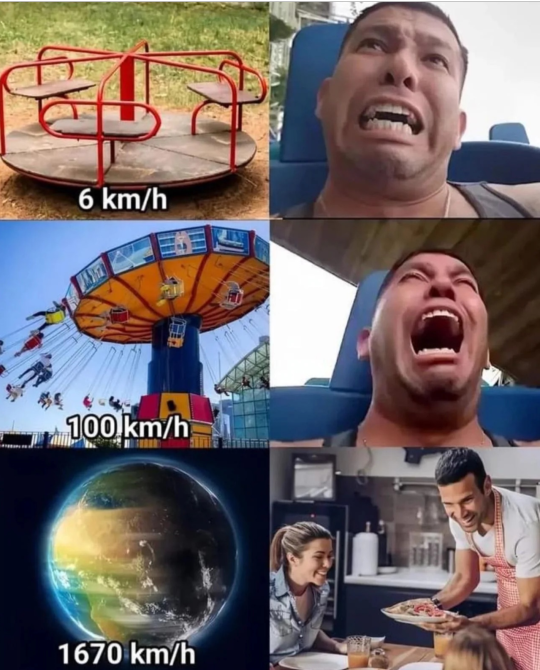
I love this ignorant flearther meme because it really shows the main mental failure of flat earthers, how they can't comprehend the size of the Earth.
Notice how they added a velocity blur to the Earth pic because they can't wrap their mind around the concept that Earth's surface can have a linear velocity of thousands of kh/h but have an angular velocity (which is what makes you feel the centrifugal force in the first 2 pics) of just 1 rotation per 24 hours.
If a playground roundabout spun at 1 rotation per 24 hours you'd barely notice it either.
If a playground roundabout had the linear velocity of Earth's surface it would have to spin roughly 265,789 times per second, which is 10 times faster than the fastest centrifuges we ever built.
6K notes
·
View notes
Text
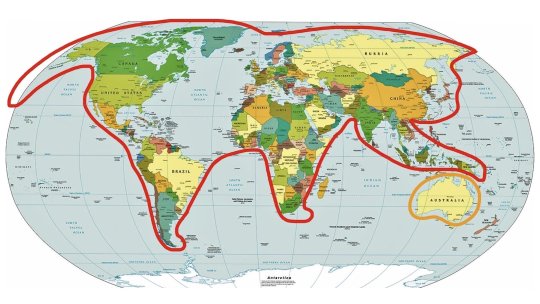
Flat Earth theory: the world is flat.
Cat Earth theory: the world is cat, and it's playing with Australia.
1K notes
·
View notes
Text

A group of Flat Earthers spent $20,000 on experiments to prove the Earth is flat, including using a high-precision laser gyroscope and a light beam test. Both experiments accidentally provided clear evidence that the Earth is round.
450 notes
·
View notes
Text

The only way this conspiracy theory is correct is by technicality
#memes#meme#lol#funny#lol memes#funny memes#funny meme haha#funny stuff#star trek#flat earth#uncarbonated water#conspiracy theories#by technicality
202 notes
·
View notes
Text
A Glimpse Of What's Beyond The Antarctic Ice Wall 👆
There is warm water and places without ice beyond the ice region 🤔
#pay attention#educate yourselves#educate yourself#knowledge is power#reeducate yourself#reeducate yourselves#think about it#think for yourselves#think for yourself#do your homework#do some research#do your own research#ask yourself questions#question everything#earth#flat earth#you decide#intuition
515 notes
·
View notes
Text

#lovers#lover girl#lover boy#firmament#astro#astrology#astro observations#astro notes#planets#astronomy#vedic astrology#vedic astro observations#sun#moon#earth#flat earth#romance
89 notes
·
View notes
Text
Worldbuilding in Flat Worlds
Oh, so you think I can't do worldbuilding on flat worlds?
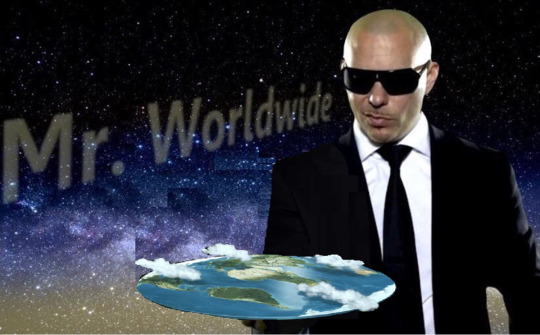
So, you might or might not have run into my rather hyperbolic advice that the first rule of worldbuilding is placing your equator. I still stand for it, and one of these days I would like to expand on that… But many on the notes have asked, and this is fair since it's worldbuilding: what about if my world is flat? Or a cylinder, or a ring, or other such shapes? While I can't cover every shape here (though I would like to try, eventually) I can tell you one thing or two about Flat Earths, Flat Worlds, Disc Worlds, however you would like to call them, and how you can do worldbuilding on them. You will be surprised at how much myth, fantasy and science fiction can mesh here. I apologize in advance for the lack of hard numbers in such things like gravity and orbits, but I can expand if you'd like.
This is going to be a LONG post, so more, way more, under the cut:
First of all, of course many cultures have thought of the Earth as flat, it makes intiutive sense. But this idea wasn't only about a flat Earth as a disc in the middle of nothing. This belief was also accompanied by many other beliefs about the sky, and what's under the earth (while I don't want to generalize, you see this sky-earth-underground motif in most cultures) and how the gods or God shaped it; so, not only the shape of the Earth, but the entire universe, a cosmology. While I could go into much depth on various cosmologies around the world (though I suggest you do!), I will explain the two "flat earths" that are more familiar to us in the Western world; the Hebrew and the Greek cosmology.

They usually don't teach you the cool lore in Sunday school.
So, what we see in the Hebrew cosmology is a flat earth, yes, but with a firmament that, unlike some might think, does not separate the heavens (as in sky) from the Earth, but rather creates a "vault" with Earth inside from the primeval ocean, as the firmament IS the sky. As you can read in Genesis 1:6-8, in the second day of creation, God divides the waters "under" and "above" the firmament. This idea of a primeval, chaotic ocean from where the creator God(s) create the world is a feature of Mesopotamian mythology (as well as many other unrelated mythologies), and I would love to expand on it, but let's focus on what the "flat" Earth looked like to the ancient Hebrews. You have a flat earth with the foundations on an endless abyss of water, which goes all around the firmament, an inmovable (the Bible mentions this several times) sky where God placed the Sun and Moon and stars to illuminate the Earth, and floodgates where the water for rain, hail and snow (and also the Great Flood) came from. And also Sheol, and the abyss of water, which along with the "heavens" in or beyond the firmament, take into more spiritual characteristics. I could go on, but as you can already see, this is a very complex cosmology, far from a single flat disc floating on nothingness.

The world according to Homer (the other one)
Let's move on to the Greeks. Now, the ancient Greeks, like Homer, initially seemed to believe in a flat earth, with many parallels to the Mesopotamian (and Hebrew) conception of the world, with a firmament and a landmass surrounded by (or floating on, as per Thales who believed EVERYTHING WAS WATER) an ocean with Greece as the center (see below). However, this conception evolved over time. Anaximander imagined the Earth at the top of a cylindrical, inmovable pillar, but more interestingly, attempted to explain the movement of the Sun and the Moon, believing them to be, to quote Wikipedia, "circular open vents in tubular rings of fire enclosed in tubes of condensed air" surrounding Earth. This idea was later refined by Plato and Aristotle as 'celestial spheres' as paths for the planets (this included the Sun and the Moon) to wander. This concept was further explored by Plato, Aristotle, and many more, to extend to the rest of the planets (which also included the Sun and the Moon), as objects moving across "celestial spheres" inside an sphererical firmament. At this point, Greek philosophers were already thinking the Earth was some sort of sphere, even if only because a sphere was considered the 'ideal' shape, but also because they had started to notice that the Moon was also spherical, boats went under the horizon, and the shadow of Earth during eclipses was round, among many other things that current Flat Earthers don't care about. Eratosthenes was the first to calculate the sphere of the Earth with remarkable precision (you probably know this story if you've watched the old Cosmos with Carl Sagan), and from there, it was mostly accepted in the Hellenistic world that the Earth was in fact round. It was finally Ptolemy by his incredibly detailed astronomical work for the time who finally cemented this system of a round (NOT FLAT!) and unmoving Earth as the center of the universe and the celestial spheres.

The Ptolemaic Universe. Not flat! Notice that the sphere right above Earth is on fire. This is because Earth was believed to be composed of the most base classical elements (Earth and Water), surrounded by a sphere of Air, and then later the sphere of Fire where the Sun orbited. The rest of the spheres were often associated with "Aether" or "crystal", but that's for another time.
As a note, as the Hebrews entered in contact with Hellenistic and later Roman civilization, they also adopted the concepts of the round earth and the "celestial spheres", which meshed really well with the concept of "the heavens" and the "circle of the Earth" mentioned in the Bible. With the rise of Christianity, this fusion of biblical and hellenistic cosmology endured for a long time. It's a myth that medieval Europe thought the Earth was flat, they all knew and teached the Earth was round… and fixed as the center of an universe made up of celestial spheres inside an spherical firmament of fixed stars. That concept endured much longer in Western thought, but that's for another time.
One interesting thing about flat earths in ancient cosomologies is that they often took the form of a circle, and that circle had a center. The center of the world. For the Greeks, it was the Omphalos stone in Delphi (this is where the expression 'navel of the world' comes from). For the Hebrews, it was the Temple at Jerusalem, and later medieval Christian maps (the T-O maps) set Jerusalem as the center of the world. This concept of a 'center of the world' in comparative mythology is called 'axis mundi', and as you can see, it takes particular importance in a world that is believed to REALLY have a center.
So, why the history lesson? It's fun, it might give you some ideas, but mostly it's to show you that the concept of a flat earth does not only imply a flat planet (indeed, the vision of Earth as just another planet took long to arise), but also a whole cosmovision of the world around it. To be fair, our current understanding of the universe, with round planets orbiting stars and galaxies and the Big Bang IS also a cosmovision. One based on scientific observation and understanding, but cosmovision nevertheless.
But perhaps what you wanted with a worldbuilding post is a world that is flat. Like a regular planet, just shaped as a disc. Let's discuss that. First of all, is such a thing possible to arise naturally? Most probably not. While I'm sure there might be at least one exception by some freak accident in the universe, maybe more, as a rule gravity tends to compress large objects into spherical shapes. A disc would eventually break up and become an asteroid field, or it would spin and bulge into a 'pancake shape' and eventually an oblate spheroid object, with a big equatorial bulge (yes, I'm going to use the word bulge a lot here). This shape might actually be common in many fast-spinning objects (that don't break apart) across the universe, and in fact you can find it in stars such as Achernar. Earth itself is a geoid, flattened at the poles and with an equatorial bulge (told you).
However, this does not mean that flat worlds are impossible. You could assume that the gods, or an ancient alien civilization (there's a lot of overlap here) made this disc of an indestructible material. How would such the dynamics of the world work then? Finally, here, is where our worldbuilding gets interesting…
Gravity:
Gravity on a disc would be very peculiar. To make a long story short, it would be stronger at the center and weaker at the edges, with the gravity pulling towards the center, which technically is the pole (I'm going to say South Pole because I'm from the Southern Hemisphere). So, if you threw a ball, it would be pulled towards the center/pole rather than the edges, and this pull would be in a perpendicular way, decreasing the farther you go from the center:

A very ugly drawing of an speculative flat world, with a core made of ~magical~ indistructible material, covered by earth, water and air. Note the direction of gravity and how water flows into a bulge on the center.
This would make for some curious effects; water and air would inevitably flood all the way to the center of the disc, where it would make a bulge, the sea level raising in a notable way there. One way to avoid this is to make the disc spin on its center, like a roulette, the centrifugal force of such a spin would make the gravity spread to the edges. Unfortunately, it's hard to calculate how fast would it be needed for it to 'even out' gravity in the whole disc. I can be sure it would be enough to tear normal worlds made of rock and metal apart, so this flat disc would have to be made of a strong, magical material (which really works well with the mythical 'God set the foundations of the Earth' motif)… or a complex structure of orbital rings inside (ultra-advanced tech artificial structures that transport matter in an opposite way to the spin, generating enough momentum so it doesn't pull apart), or some other kind of exotic matter. The spin would probably would not be noticeable to the inhabitants of the disc in their day to day lives, though, as the 'fixed' stars would move, I'm sure the inhabitants would incorporate in their calendars.
One important thing to remember about gravity is that it's not based in the size of an object, it's based on mass. You could have a (regular) planet smaller than Earth, but with the same gravity, so long as the mass was denser. Similarily you could have huge planets with Earth-like gravity as long as the inside is less dense (bubbleworlds, another thing I'm dying to talk about). So you could have, for example, a disc the size of Earth made of a magical or ultra-tech material (let's call it Newtonlith) where certain places inside the disc would be dense to create gravity fields inside the disc. In a normal setting, this would break it apart, but perhaps, if it's in a form of a spread out gradient, it wouldn't. This would have some very odd effects, which I leave to the reader to imagine.
(I'm of course, dismissing stupid concepts from modern flat earthers such as "Earth perpetually falling down" or "gravity doesn't exist", but I have to say, they do have some wacky worldbuilding)
The Edge and The Other Side:
So, if you get to the edge, gravity would feel strange, making it harder to you to keep going since it's pushing you perpendicularily to the center, until you actuall walk into The Edge, and gravity would feel level. It would be like walking on the oustide of a wheel. However, it's hard for me to imagine what this "edge" would look like. Assuming the disc spins, I would expect the edge to get thinner and thinner, smoothing out rather than being like a sharp "coin-like" edge… or, if it spins fast enough, in fact, more of a sharp cliff or, how could I define this? "Horizontal mountain chain". However, again, we're also assuming this whole thing is made of some magical or ultra-tech material, so the edge might as well be a flat expanse imposible to erode, like a coin edge, which might let you, quite literally, walk around the circle of the Earth. In fact, some enterprising civilizations might make a railroad or transport system all around the circle. Another thing about the Edge is that, because all the water would go to the centers of the disc, it would be very dry, and it also would have winds constantly circulating in the direction of the spin. No wall of ice, at least not as I imagine it; as we'll see later, the temperature on a flat Earth would be rather uniform unless there are other conditions affecting it.
One important thing is that, assuming this is a disc *floating* in space (no elephants or turtles…), is that the other side would be as habitable too. Remember, this case is actually one where the centers of the disc are two poles, and the edge is actually the equator! (HAHAHAHA, TOLD YOU THE EQUATOR WAS IMPORTANT, EVEN IN FLAT WORLDS) So yes, you could, in a way or another, cross over the edge (the equator!) to another whole new world, cross over to The Other Side. Assuming, of course, they get light and such, which is the next point…
Before that, though: regarding horizons; no, there wouldn't be a horizon in a flat world. You could see pretty much all the way until something like mountains block your sight. It's hard to find good estimates on exactly how far though, but humans can make out faint details up to 3km away in good conditions (coincidentially, that's around where the 'horizon' is in our Earth) and lights up to 48km away. Insert your joke about Legolas here.
Orbits, Day, Night and the Sky:
How would day and night work? There are Options.
Again, assuming our magical/ultratech indestructible disc, it could spin on an axis so that each side faces the star it orbits, like a spinning coin. This would be a weird thing, especially if the planet already spins on its edge/equator, but not physically impossible. The orbit of Uranus is similar, with one pole facing the sun during summer and the other during winter, but that means an almost century long day in its case (a year in Uranus is 84 Earth years) and a similar long "day" in an Earth-like orbit. But if this world was created to spin much like Earth, there won't be that much difference between our day and night. You could even tilt it to simulate seasons.

An example of the movements of a flat world given the above; rotation on its axis (that is, the center of the disk, rotation in another axis "like a coin" to give night and day, and revolution around a star. I also went the extra mile and gave it a climate like I will discuss later: a parched edge without water, with increasingly rainy desert, savanna and rainforest as you get to the center, and at last the central sea with a perpetual storm.
But I digress. You probably aren't here for a boring normal planet that orbits a star, no, no. You want the full mythical world experience, you want a world where the Sun and the Moon spin around the circle of the Earth, and fuck Copernicus. Let's leave aside what those 'luminaries' actually ARE for now, they can be some sort of magical tech objects or literal gods. How would that work?
You could have two kinds of luminaries here. The clever folks at the Flat Earth Society imagine a sun and a moon hovering over the Earth, spinning in a circular orbit about what we call the equator (in our round Earth, of course) as some sort of giant spotlight 32 miles across and a few thousand kms away, jumping and falling out of view, as I understand it. Same with the Moon. For a more classical approach, you could also have a sun and a moon orbiting your disc, which would be interesting, as the other side of the disc would also be illuminated while the other one is dark (in many ancient myths, the sun went into the underworld at night)
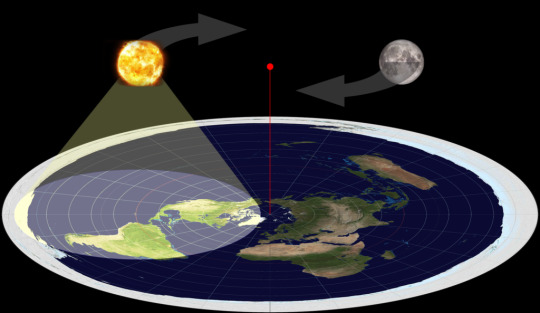
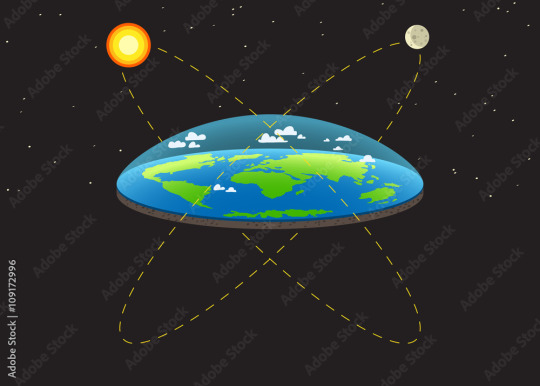
The two ways you could have mini-suns: either hovering above your disk or orbiting it. I was too lazy to make a graphic, so thanks to the Flat Earth Society I guess.
Like I said in the beginning, I haven't done the calculations on how such orbits would work, other that they would be complex, and not natural or stable at all. But after all, suns 32km across that hover over a flat world aren't exactly natural. If there is a place to insert gods and magic shit, this is one, though a fusion or black-hole powered spotlight that completes a very complicated orbit following ancient programming is also an option depending on what kind of setting are you doing. You could watch some videos of people debunking actual flat earthers to get a few ideas on how they explain the whole sun thing (spoilers: they just don't believe in eclipses, which indeed would be impossible here, unless magic is involved).
Both options have VERY important implications on the climate. The first one, with a disc orbiting a star and spinning to get day and night, would mean that the disc would get the same amount of light all over it, thus having the same overall temperature, without any latitudes. The second one(s), depending on the orbits of the suns, means you could have "tropical" areas and cold areas depending on where the sun's "spotlight's" points, either as a regular orbit over an equator, or a more complicated one that might not correspond to what we would expect. Funnily enough, Terry Pratchet's Discworld's sun has such a complicated orbit it's never really explained, it even crosses the legs of the elephants upholding the Discworld sometimes.
Speaking of which, THE Discworld of course moves across space on the back of 4 elephants standing on the shell of Great A'tuin (awesome name for your Torterra in Pokémon btw), and its movement is apparently so significant that the astrologers have to regularly change their zodiacs. And indeed, a flat world would also move around its galaxy if it existed, and carrying its own fantasy sun, it wouldn't need to orbit any star to be habitable. Our own Sun is moving with our entire solar system on tow (or rather orbit) at a speed of, holy shit I had to look this up, 828,000 km/hr. However, even at this speed, the stars seem fixed to us, a whole spin around the center of galaxy (a galactic year) takes 225 million years. Still, the stars are moving like us, in fact, some constellations are in slightly different positions from ancient times, just not at the pace in Discworld.
As a final note, I believe a moon with enough gravitational pull would cause tides as it orbits the flat disc much like on Earth. Would be funny if an actual normal moon like ours orbited a flat world, with a small sun on inside its orbit (not too far from the Ptolemaic universe, actually)
Geology and Climate:
Like I said, we're assuming this flat world is made of either some sort of ultra-tech exotic matter, or was just straight created with magical material. So you would think geology would be pointless to discuss, right? Not so fast. There's some assumptions we can make. First of all, there would be no plate tectonics. Plate tectonics, of course, need an active mantle and core, which a flat world just cannot have at least on the size of Earth. So no earthquakes or volcanoes, unless there's magic involved (Terry's Discworld, which is based on Hindu mythology, played with this by having the elephants holding it up move ocassionally, causing earthquakes) So, a world with less natural disasters, wonderful, right? Sure, but in the long run (millions of years), it's tectonic activity that keeps the Earth alive, replenishing CO2, moving the continents around stimulating evolution and changes in climate and the water cycle. This can be replaced by some magical means, though that means that Something Magical is doing Stuff in your world, (you know, besides the whole flat world thing) and you better contemplate what does it mean for your setting/story. Similarily, one strange thing about geology in flat worlds is that, as mentioned, assuming gravity points to the center(s)/poles, there would be a pull towards there, so mountain peaks would be taller and pointing towards the edge of the disc, and as we will see below, also face greater erosion from there, as the winds and water would also move towards the center/pole.
What about climate? That one depends on how your light sources work. But in general, without poles or equator (well, they exist, but you know), the whole disk surface(s) would recieve equal light all year. Which means no seasons and not climate variation. Seasons are possible by tilting the disc, but overall, the climate in a disc world would be stable. Or would it? By the sheer morphology of a disc, not only water would flow into the center, but also air, and in the case of a spinning disc, it would spin into it. Air would flow into the center into powerful winds: how powerful? Difficult to say, but perhaps geography like mountains and hills could moderate them. If there was no spin, I imagine both water and air would accumulate in a large inner sea (as water would, in one way or the other, flow towards it, and water cannot be denied) and high pressure which could be an odd bulged sea with surprsingly calm weather. However, there's another option. Astronomers have studied tidally locked worlds, worlds where one side faces their star all the time. In this case, the convection currents flows from the light side flow to the dark side, creating strong winds and perhaps, assuming there is water, a perpetual storm in the light side. This has a parallel in our case, as the air in a flat world will all spin around the center, with no other way to go, and with it, it will be where all the heat and energy of the atmosphere (atmodisc?) accumulates. In this world, the center of the world (or at least, this side of it…), the axis mundi, would be the eye of a gigantic eternal typhoon.

OOOH DISCWORLD I'M HOWLING TO THE MOON
What would geography, life and culture be like in such a world, given all the things I've told you? Well, that's the most fun part. It's up to you to imagine it. I personally don't find flat worlds all that engaging (sorry, Terry), I feel more comfortable with my good old spherical worlds with tropical latitudes and all that, or other more futuristic stuff things like ringworlds or Dyson spheres (which I hope to cover in another post). But I hope I gave you enough information and ideas so that the ones you might create are both original and believable.
Thank you for reading this, I hope you enjoyed it and it inspired you to do some worldbuilding! If you would like to see more, I would be VERY grateful if you gave me a tip and some suggestions in my ko-fi below, especially as my country here in the other side of the disc is under the rule of a libertarian fascist idiot, so every little help does indeed help a lot! Follow me and stay tuned for some more wacky worldbuilding and rants about the Southern Hemisphere.
#cosas mias#worldbuilding#fantasy#writing#writing advice#flat earth#I spent a lot of time on this one so I hope you reblog#and I resisted to post an Earth-chan meme so you should be grateful actually#biotipo worldbuilding
515 notes
·
View notes
Photo
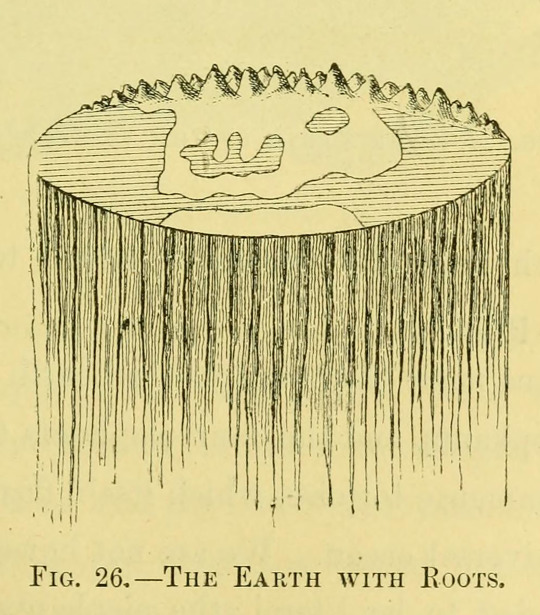
Source details and larger version.
A worldly collection of vintage earth imagery.
110 notes
·
View notes
Text


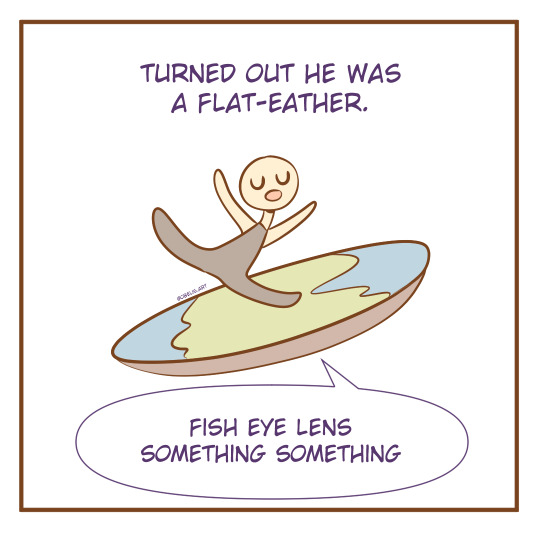






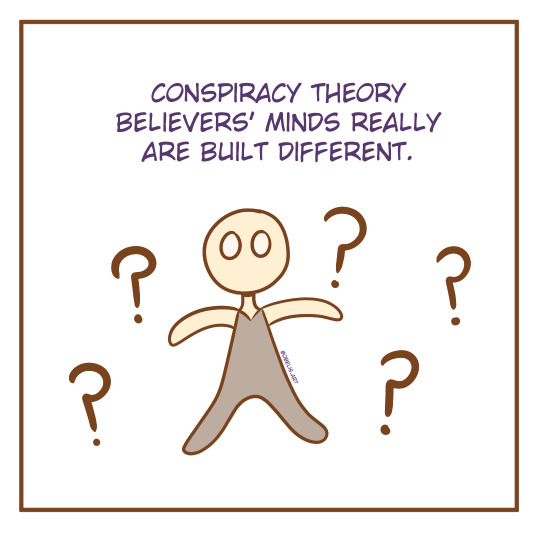
Conspiracy theory believer
67 notes
·
View notes
Text
"I told you, I never made the world," said Om. "Why should I make the world? It was here already. And if I did make a world, I wouldn't make it a ball. People'd fall off. All the sea'd run off the bottom."
"Not if you told it to stay on."
"Hah! Will you hark at the man!"
"Besides, the sphere is a perfect shape," said Brutha. "Because in the Book of--"
"Nothing amazing about a sphere," said the tortoise. "Come to that, a turtle is a perfect shape."
"A perfect shape for what?"
"Well, the perfect shape for a turtle, to start with," said Om. "If it was shaped like a ball, it'd be bobbing to the surface the whole time."
"But it's a heresy to say the world is flat," said Brutha.
"Maybe, but it's true."
Terry Pratchett, Small Gods
#om#brutha#the great a'tuin#small gods#discworld#terry pratchett#book of om#creation#gods#deity#power#the disc#perfect shape#sphere#physics#gravity#mythology#theology#logic#turtles#turtles all the way down#flat earth#heresy#it's true
226 notes
·
View notes
Text
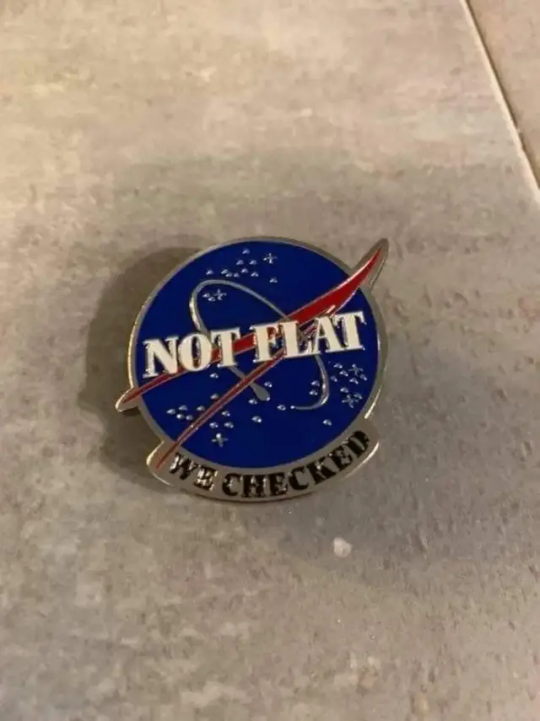
source
565 notes
·
View notes
Text
Choose a slightly diffrent version of our world to escape to
Weather you're transferring yourself to another dimension or you’re retroactively changing our world is a matter of perspective. Either way, only you will remember the change, and all your loved ones will still exist with as minimal a change to everyone's lives as possible. Transplaner security does not allow the finer details of this process to be understood by mortals.
1- ritual magic and deities are scientifically proven to exist. The exact details on it all are still ambiguous but people know for a fact that these things work and are true. Religious conflict is down, and it's a fact that there's something out there to answer your prayers.
2- the earth is flat and infinite. The seven continents we know are lit by the sun (which is small and goes out at night) which rotates over the equator (the north pole is the center of this map projection). But there are other suns beyond Antarctica, and 21st century civilization is working to contact these other continents. We will never be done expanding our trades routes and exploring for better or for worse.
3- dragons exist. They split off from a difftent fish than other land vertebrates hence the six limbs. There are all different kinds of dragons, living throughout the world. There's nothing magical about them, they just exist.
4- the six continents we know of with humans are just six islands in a vast ocean. Most of human history is the same or similar, just much higher density, thought the same cultures and civilizations developed. Because the population is the same human territory is a single massive city, using unquine technology to harvest food. What exists on the rest of the earth is just starting to be known.
5- necromancers exist as a valid field of art and science. Zombies, ghosts, vampires, liches, shades and other such creatures all exist as functioning members of society. Everyone accepts this as good and normal.
6- humans are capable of using willpower to change their physical sex after completing puberty. The process takes about six months to complete, and is mostly painless. Alongside swapping your sex it's also possible to mix and match traits or completely get rid of the traits of either sex. There is stigma around this, but it's slowly gaining more acceptance as time goes on. Body type and eye color can also be changed similarly, and how old you look is somewhat fluid based on your desires.
7- every rocky planet in our solar system and most large moons have sentient life. We are slowly making further and further contact with those civilizations.
8- the world is slightly more progressive on basically every issue. It's far from perfect but our world looks like an exacerbated parody of their world's political and social problems.
9- humans don't make contact when they mate, like fish or scorpians. Nobody has sex or desires sex in any way, and human bodies have a lot less sexual dimorphism. Gender is more fluid, sexual assault and harassment can't happen, and physical affection is way more common.
10- humans live longer (the oldest people are in their 900s) and resist illness much better. They have stronger mote athletic bodies, and have appearances that resemble closer what they individually think is pretty. They also need to sleep a lot less and have higher pain tolerance.
11- gender as a concept doesn't exist. People are biologically the same, they just don't have any social construct of male and female. People generally dress similarly to what we'd consider masculine, and he is the default pronoun, but feminine things aren't rejected, or even categorized as feminine. Relationships also aren't considered platonic romantic or family, people are just close to eachother and there's no special word for certain kind of close relationship that's different from others in a socially enforced way.
12- there's a whole new complex set of social constructs that didn't exist in the world you know. This is bad mabye.
Reblog to begin the transportation. Like to awake one of your freinds to the reality of the changes.
#196#my polls#tumblr polls#poll#asexual#nonbinary#non bianry#enby#transgender#trans positivity#enby positivity#wish fulfilment#alternate reality#alternate universe#alternate history#dragons#dragon#undead#necromancy#aliens#alien#magical realism#flat earth#worldbuilding#writing#my worldbuilding#my writing#vampires#queer#queer positivity
175 notes
·
View notes
Text
203 notes
·
View notes
